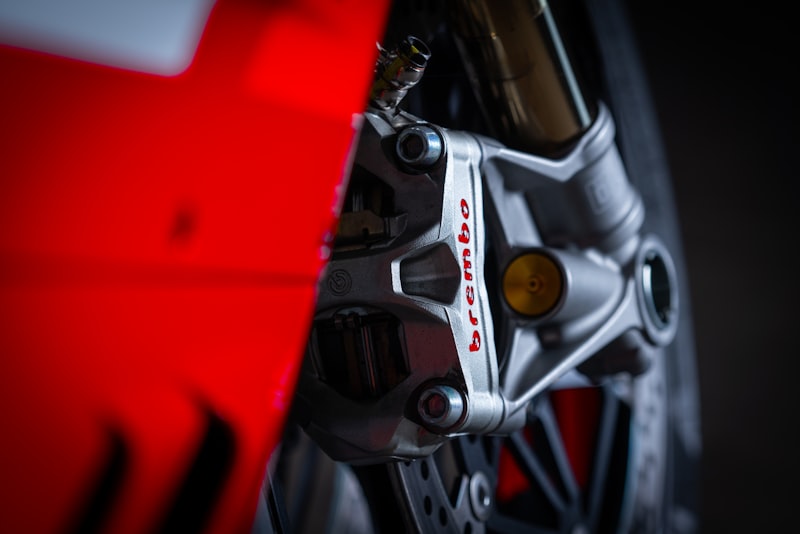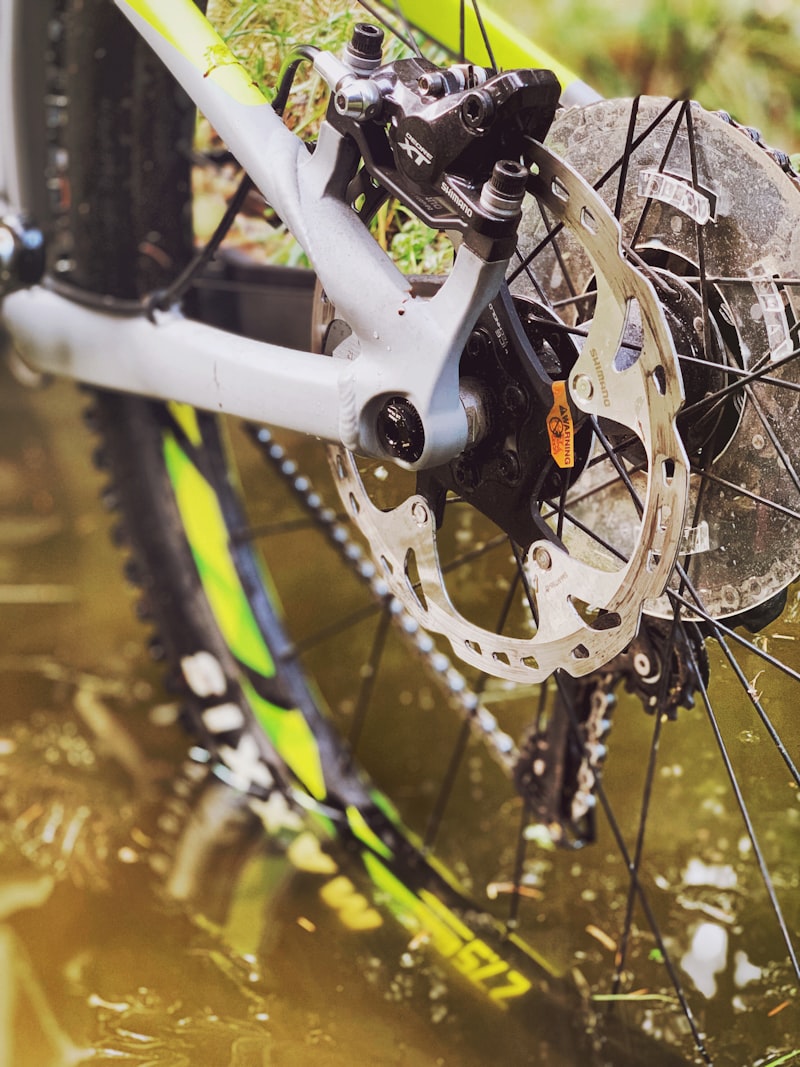Firstly, when selecting a brake pad replacement service, prioritize expertise. You want technicians who are experienced and knowledgeable in handling brake systems. Look for certifications or affiliations with reputable automotive associations. These indicate a commitment to quality and adherence to industry standards.
Next, consider the quality of brake pads offered. Opt for a service that uses high-quality, OEM (Original Equipment Manufacturer) or equivalent brake pads. These pads are designed to meet the specifications of your vehicle, ensuring optimal performance and longevity. Cheaper, inferior quality pads may save money initially but could lead to frequent replacements and compromised safety.
Convenience is another key factor. Choose a service center that is conveniently located and offers flexible scheduling options. This ensures that you can get your brake pads replaced without disrupting your daily routine excessively. Look for services that offer quick turnaround times without compromising on thoroughness.
Transparency in pricing and services is non-negotiable. A reliable brake pad replacement service will provide clear, detailed estimates upfront. They should explain the breakdown of costs and any additional charges that may apply. Avoid services that are vague or unwilling to provide written estimates.
Customer reviews and testimonials are invaluable resources. Take the time to read reviews from previous customers to gauge their satisfaction levels. Look for feedback on the quality of service, professionalism of staff, and overall customer experience. Positive reviews can instill confidence in your choice.
Lastly, consider warranties and guarantees. Reputable services often offer warranties on parts and labor, providing you with peace of mind. This demonstrates their confidence in the quality of their work and their commitment to customer satisfaction.
By prioritizing expertise, quality, convenience, transparency, customer feedback, and warranties, you can make an informed decision when choosing a brake pad replacement service. Remember, your safety on the road depends on reliable brake performance, so choose wisely!
Decoding Durability: Finding Brake Pads Built to Last
Durability isn’t just about lasting long; it’s about performing consistently under pressure, literally. High-quality brake pads are engineered to endure the rigors of frequent braking without compromising their effectiveness. They’re like the unsung heroes of your car, quietly ensuring your safety mile after mile.
What makes some brake pads last longer than others? It’s all about the materials and design. Premium brake pads often feature advanced friction materials that withstand heat and friction better than standard pads. This resilience means fewer replacements and more miles between visits to the mechanic.
Think of it this way: choosing durable brake pads is like investing in the long-term health of your vehicle. They not only enhance safety but also contribute to overall driving comfort and peace of mind. Whether you’re navigating city streets or tackling winding country roads, knowing your brake pads can handle the stress gives you confidence behind the wheel.

So, how do you decode durability when shopping for brake pads? Look for brands known for quality and reliability. Check customer reviews and expert recommendations to gauge performance over time. Remember, durability isn’t just a feature; it’s a promise of reliability when you need it most.
Brake Pad Replacement: Expert Tips for Longevity and Safety
Brake pads are essential components of your car’s braking system, responsible for creating the friction that slows down or stops your vehicle when you press the brake pedal. Over time and use, brake pads wear down, necessitating replacement to maintain optimal braking performance. Here are some expert tips to help you ensure longevity and safety when it comes to brake pad maintenance:
-
Regular Inspections: Check your brake pads regularly, ideally every 12,000 miles or as recommended by your vehicle manufacturer. Look for signs of wear such as thickness nearing 3mm or less, uneven wear, or squealing sounds when braking.
-
Quality Replacement Parts: When replacing brake pads, opt for high-quality parts that meet or exceed OEM (Original Equipment Manufacturer) standards. This ensures reliability and durability, crucial for safe braking.
-
Brake Fluid Checks: Inspect brake fluid levels regularly and ensure they are within the recommended range. Low brake fluid can affect braking efficiency and lead to brake pad damage.
-
Smooth Driving Habits: Avoid sudden braking whenever possible. Gradual braking extends the life of your brake pads by reducing heat buildup and wear.
-
Professional Installation: While DIY maintenance is possible for some car owners, it’s advisable to have brake pads replaced by a qualified mechanic. They can ensure proper installation and inspect other components of the braking system for optimal performance.
-
Consider Driving Conditions: If you frequently drive in stop-and-go traffic or hilly terrain, your brake pads may wear out faster. Adjust your maintenance schedule accordingly and consider more durable brake pad materials if needed.
-
Bedding-In New Brake Pads: After replacing brake pads, follow the manufacturer’s instructions for bedding them in. This process optimizes the contact between the pads and rotors, enhancing braking effectiveness.
Budget vs. Quality: Navigating Brake Pad Replacement Costs
Budget-friendly brake pads are appealing because they promise immediate savings. They often come at a lower price point and can be a quick fix for your braking needs. However, the trade-off here is durability and performance. Cheaper pads might wear out faster, requiring more frequent replacements and possibly costing you more in maintenance over time. It’s like buying a cheaper pair of shoes that need replacing sooner versus investing in a durable pair that lasts for years.
On the flip side, opting for quality brake pads may mean a higher initial cost, but it can pay off in terms of performance and longevity. High-quality pads are designed with superior materials and craftsmanship, offering better stopping power, quieter braking, and less dust accumulation on your wheels. They can also withstand more heat and stress, making them ideal for demanding driving conditions. It’s akin to investing in premium tires that provide better grip and safety on the road.
When making your decision, consider your driving habits, vehicle type, and how long you plan to keep your car. If you drive frequently or in challenging environments, quality brake pads could offer better reliability and safety, ultimately saving you from potential accidents and repairs down the road.
Ultimately, whether you prioritize budget or quality, it’s essential to weigh the pros and cons based on your specific needs and circumstances. Finding the right balance ensures you get the best value for your money while maintaining optimal safety and performance for your vehicle.
Beyond Basics: Advanced Features in Modern Brake Pads
Imagine your car smoothly gliding to a halt, almost effortlessly. That’s the magic of modern brake pads. But did you know there’s more to them than just stopping power? Let’s uncover the advanced features that make them stand out.
First off, advanced brake pads often utilize innovative materials. Unlike traditional pads, which are mostly made from organic or semi-metallic compounds, these advanced versions might incorporate ceramics or even carbon fiber. These materials not only enhance braking performance but also contribute to durability and reduced noise levels. It’s like upgrading from a basic smartphone camera to a professional DSLR – the difference is noticeable.

Another key feature is thermal stability. When you brake, friction generates heat. Advanced brake pads are designed to handle this heat better, which means they maintain consistent performance even under intense braking conditions. Think of it like a marathon runner who stays strong throughout the race without getting fatigued.
Furthermore, advanced brake pads often boast superior fade resistance. Brake fade occurs when repeated braking reduces the pad’s effectiveness due to overheating. With advanced pads, this issue is minimized, ensuring reliable braking power when you need it most – whether you’re cruising down a mountain road or navigating busy city streets.
Let’s not forget about dust and noise reduction. Ever noticed those black, dusty rims after a long drive? Advanced brake pads produce less dust, keeping your wheels cleaner for longer. Plus, they’re engineered to operate quietly, eliminating that annoying squeal often associated with braking.
While basic brake pads do their job adequately, advanced options elevate your driving experience to a whole new level. With superior materials, enhanced thermal stability, improved fade resistance, and quieter operation, they offer a combination of performance and reliability that every driver can appreciate. So next time you think about upgrading your brakes, consider the advanced features that modern brake pads have to offer – your car (and your passengers) will thank you for it.
Comparing Brake Pad Materials: Which is Best for Your Vehicle?
Organic Brake Pads: Organic brake pads are made from a mixture of materials like rubber, glass, carbon, and even Kevlar. They are known for their quiet operation and smooth braking performance. These pads are gentle on brake rotors, which can prolong rotor life. However, they may wear out faster than other types, especially under heavy braking conditions or in high temperatures.
Semi-Metallic Brake Pads: Semi-metallic brake pads are composed of metal fibers (like steel) mixed with organic materials and fillers. They are known for their durability and excellent performance in a wide range of temperatures and conditions. Semi-metallic pads offer strong braking power, making them suitable for high-performance vehicles or heavy-duty applications. However, they can be a bit noisy and may produce more brake dust compared to organic pads.
Ceramic Brake Pads: Ceramic brake pads are made from dense ceramic materials bonded with copper fibers. They are favored for their exceptional braking performance, quiet operation, and minimal dusting. Ceramic pads also generate less heat, which helps in prolonging the life of brake components like rotors and calipers. Although they tend to be more expensive than organic and semi-metallic pads, their overall performance and longevity often justify the higher cost.
Choosing the best brake pad material depends on your driving habits, vehicle type, and budget. If you prioritize quiet operation and low dust, ceramic brake pads might be your best bet despite their higher cost. For high-performance vehicles or towing applications, semi-metallic brake pads offer excellent durability and braking power. Organic brake pads are a good choice for everyday commuting and general driving scenarios where smooth braking and rotor longevity are important.
Understanding the differences between these brake pad materials allows you to make an informed decision based on your specific needs. Whether you opt for organic, semi-metallic, or ceramic brake pads, ensuring they are installed correctly and maintained properly will help maximize their performance and lifespan.
Customer Reviews Unveiled: Choosing a Trusted Brake Pad Service
Firstly, why do customer reviews matter? They are windows into real experiences, offering insights beyond promotional claims. Authentic feedback reveals the nitty-gritty of service quality, pricing transparency, and customer satisfaction. It’s like having a trusted friend share their honest opinion before you commit.
When sifting through reviews, pay attention to recurring themes. Do customers rave about prompt service, knowledgeable technicians, or fair pricing? These patterns highlight consistent strengths or potential red flags. Moreover, reading through diverse reviews gives a holistic view, balancing individual opinions.
The star ratings are just the beginning. Dig deeper into the narrative—stories of how a service exceeded expectations or fell short can steer your decision. Look for specifics: Did the brake pad replacements last as promised? Was the final bill a surprise or aligned with the estimate?
Navigating customer reviews requires a critical eye. Consider the context—occasional negative reviews amidst a sea of positives might be isolated incidents rather than systemic issues. On the flip side, numerous glowing reviews build trust in reliability and customer care.
Ultimately, customer reviews are your tool for informed decision-making. They empower you to choose a brake pad service that aligns with your expectations of quality, transparency, and customer support. So, before you hit the road, let the collective wisdom of fellow consumers guide you to a brake pad service you can trust.
Frequently Asked Questions
Should I opt for OEM or aftermarket brake pads during replacement?
Learn whether OEM or aftermarket brake pads are better suited for your vehicle’s needs during replacement.
What factors should I consider when choosing a brake pad replacement service?
Learn about the key factors to consider when selecting a brake pad replacement service. Understand how to assess quality, compatibility with your vehicle, warranty options, and the reputation of the service provider. Ensure your safety and vehicle performance by making an informed choice.
How do I know if a brake pad replacement service is trustworthy?
Learn how to determine the trustworthiness of a brake pad replacement service. Discover key indicators such as certifications, customer reviews, transparent pricing, and warranty offers.
How much does a typical brake pad replacement service cost?
Learn about the typical cost of brake pad replacement services with this concise FAQ. Find out what factors influence pricing and how to estimate costs effectively.
What are the signs that indicate I need to replace my brake pads?
Learn about the signs indicating the need to replace your brake pads. Discover how to recognize these indicators early to ensure your vehicle’s safety and optimal braking performance.


